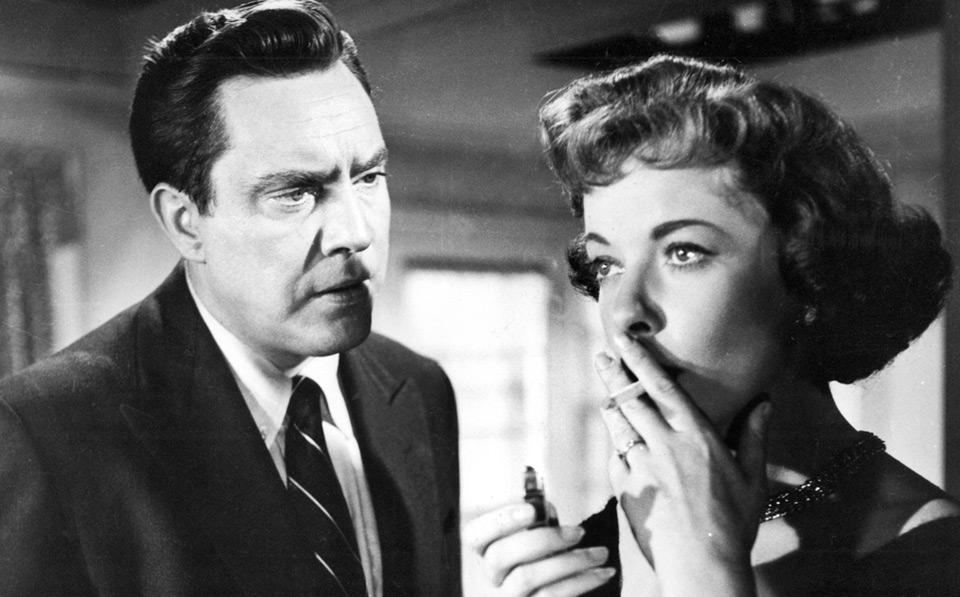Produced under the aegis of The Filmakers [sic], the independent production company co-founded by Ida Lupino and then-husband Collier Young, The Bigamist has been called the first American feature film directed by a woman who also plays a starring role — the legendary Lupino provides a remarkable performance both in front of and behind the camera. Released in 1953, it is perhaps her second-best known work as a director, following The Hitch-Hiker (also 1953), similarly renowned as “the first noir directed by a woman.” The Bigamist also unfolds like a noir — though we know both the who and the what of the crime, the when and how of its revelation to the parties involved provides a simmering suspense throughout.
Harry and Eve Graham, co-owners of a successful deep-freezer business who live in a massive, interestingly furnished San Francisco apartment, are looking to adopt a child; the adoption agent is ready to proceed until he senses Harry’s hesitation to agree to have “every detail of his private life” investigated. The agent-cum-P.I. discovers that Harry has an address in Los Angeles, a frequent destination for the traveling salesman, under the name “Harrison Graham.” Paying the ill-fated husband a surprise visit, the agent is stunned first by the picket-fenced home — a much more traditional representation of the model lifestyle for the good, clean American family of the time — and then by the shattering cry of a baby from within. The majority of the film then follows Harry’s explanation of how his double life came to be, flashing back to a sunny day in LA when his “loneliness was like a pain,” and he encountered Phyllis, a similarly-lonely woman, who lived in a dreary rooming house and worked at an even drearier Chinese restaurant.
Though Eve is portrayed as the “perfect wife” — ”Good in the office, great around the house,” per Harry, and not without some resentment — Harry and Phyllis’ story is also presented as its own contained romance, tender and apparently untainted, particularly as far as she is concerned. The film is clear in its presentation of Harry as the “villain,” yet its structure (and Edmond O'Brien’s tortured performance) give the tragedy an effective sense of ironic inevitability. The problems are both melodramatic and banal: Eve neglects her marriage, focusing on work to distract herself from the pain of her infertility; Harry loves her, but wants to feel needed; perhaps most ironically, as his lawyer explains, Harry chose the “respectable” route in marrying Phyllis and giving her son a legal father, thereby ensuring his own unrespectability.
Lupino’s lived experiences of misogyny in the workplace and inflexible social mores likely contributed to the film’s approach to the issues between Eve and Harry, and it might be worth noting that the film was co-written and produced by Young, whose divorce from Lupino in 1951 was shortly followed by his marriage to her co-star Joan Fontaine in 1952. Though The Bigamist presents the issues facing working wives and citizens who fail to achieve the perfect nuclear unit legally sanctioned and morally demanded in the “baby boom” years of the 50s with exceptional nuance and complexity, such was the case, it should also be noted, with each of the remarkable “issue films” produced by The Filmakers with Lupino at the helm.



